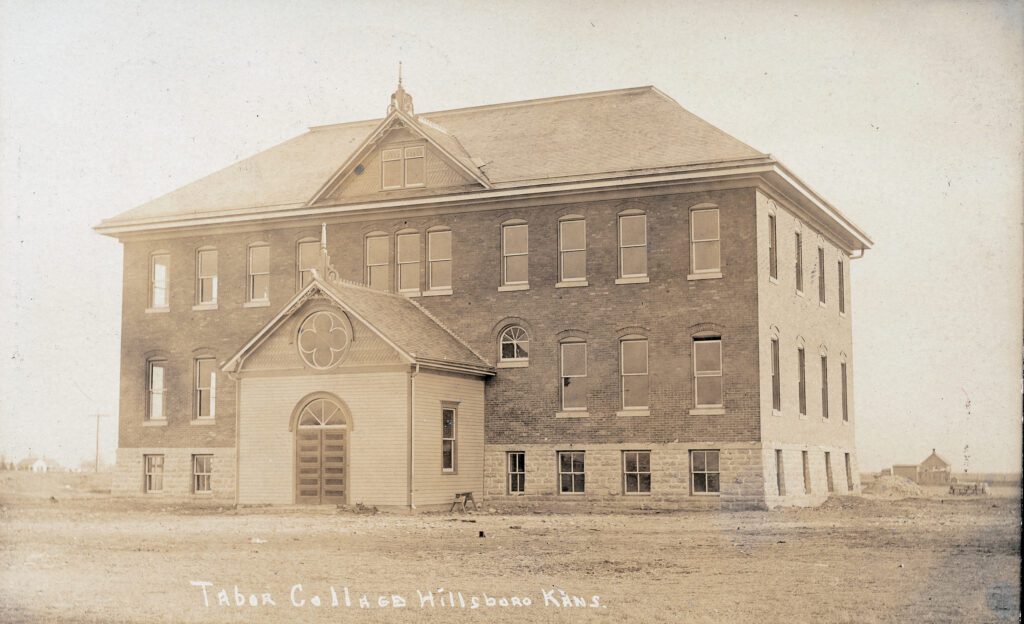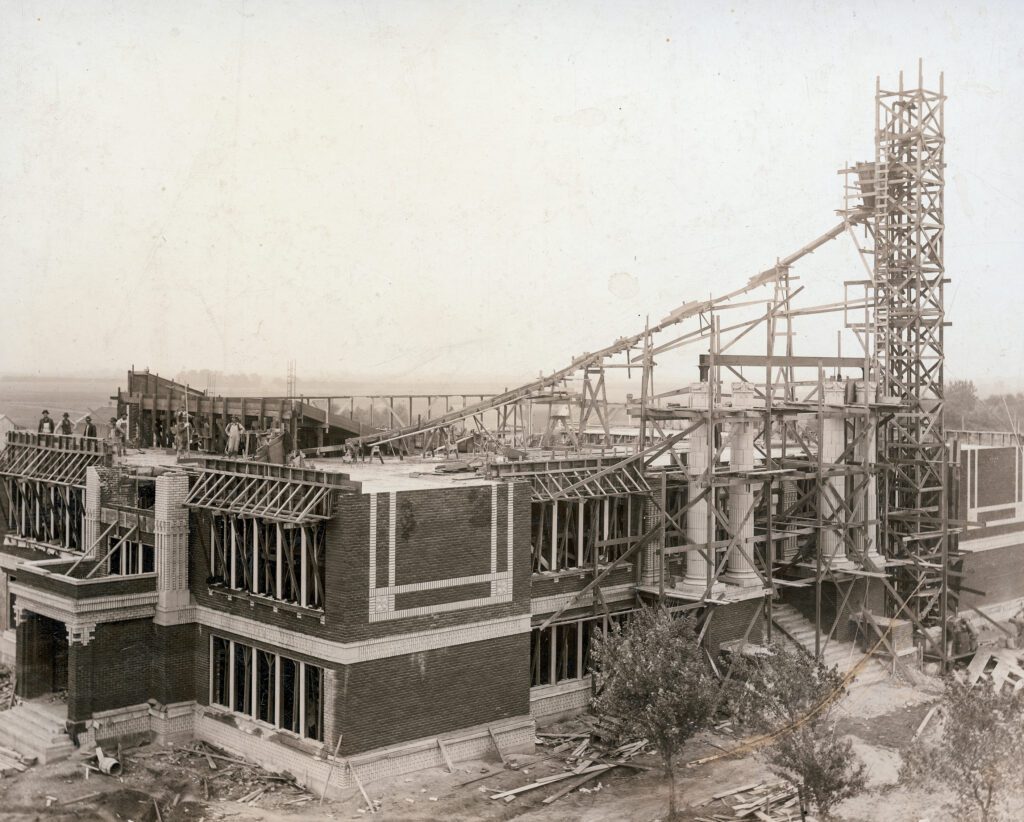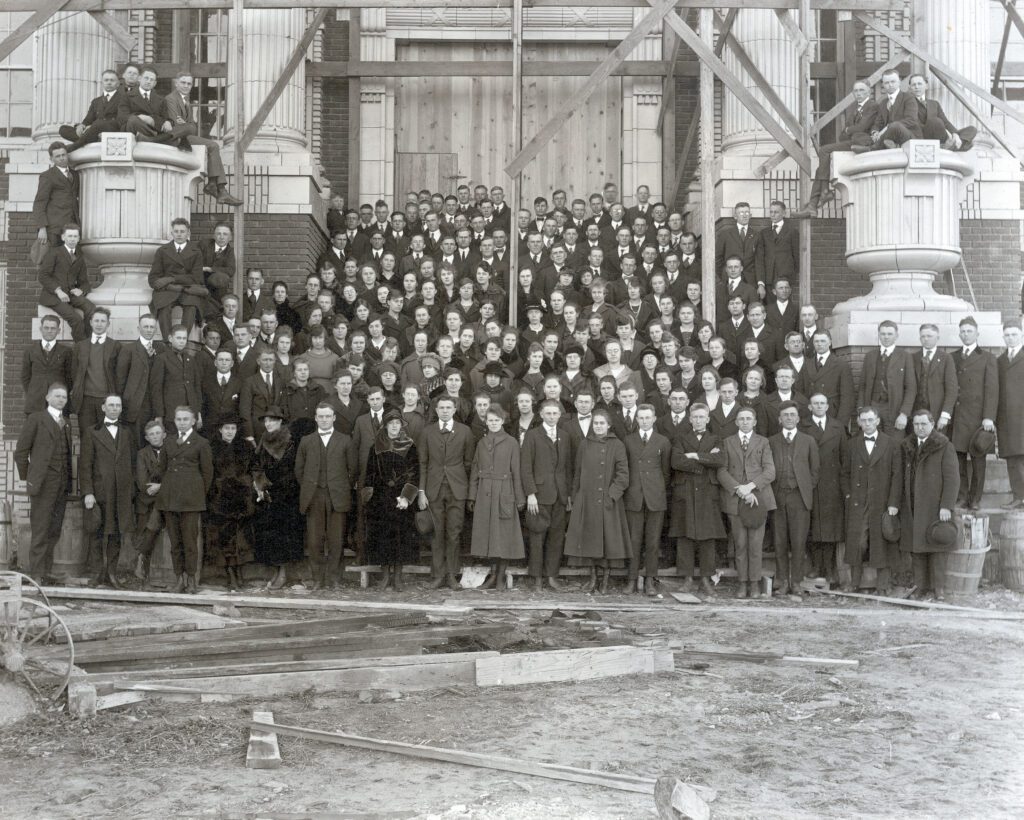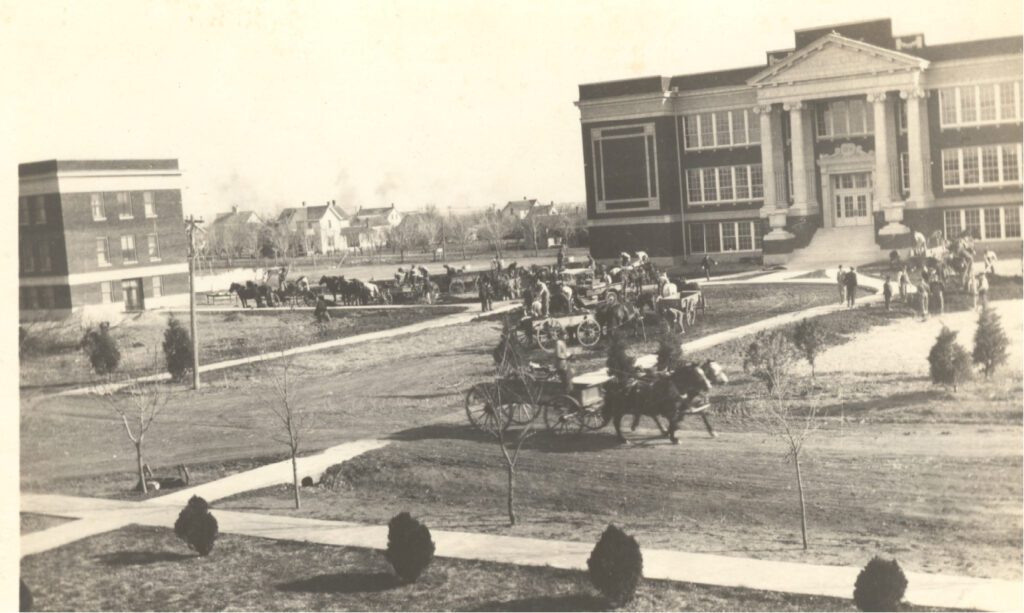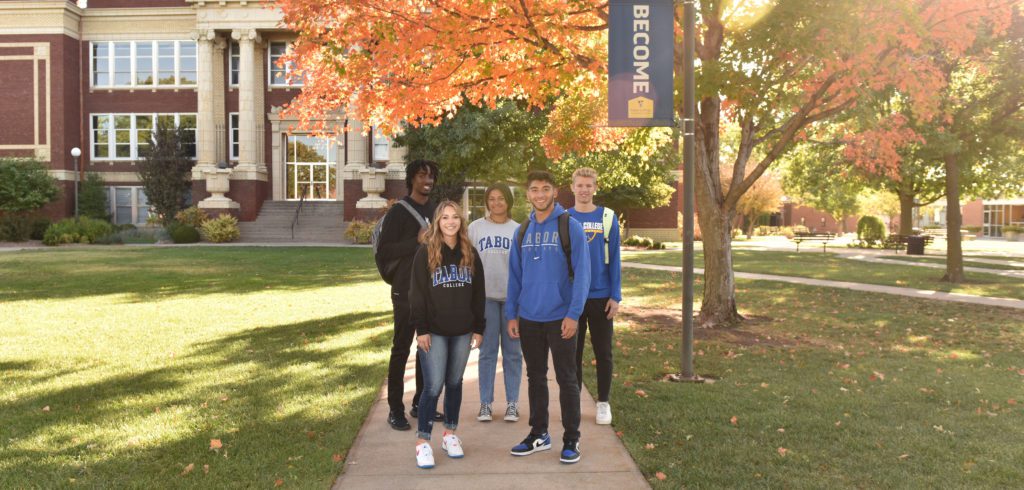On the morning of April 30, 1918… the college janitor came early to start a fire in the building to heat the building for classes. After leaving for breakfast, heavy smoky was seen to arise from the college building. An account of what followed is given in the words of Professor Renetta (Schulz) Friesen: “Tabor is burning!”
The flames were coming through the roof before help was near. Helplessly, with tear-dimmed eyes and bleeding hearts, faculty, students, and friends saw their hope crumble into ashes. One loud horrible crash, the walls caved in, and the Tabor building was no more.

